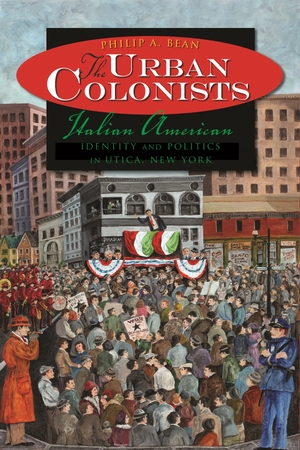"A major contribution to the field of Italian American history as well as local history, ethnic and interethnic studies, urban history, and the evolution of conflicting forces of ethnic maintenance versus assimilation."—FrankJ. Cavaioli, Farmingdale State College, SUNY
"A well-researched and accessible history of the advent and decline of the Italian immigrant settlement in Utica, New York."—Fred Gardaphe, Queens College, CUNY
"A compelling study . . . . Bean's thought-provoking emphasis on the membership in the Democratic Party as a pivotal means of empowerment and a key expression of community identity will aptly dispel stereotypical interpretations of Italian Americans' amoral familism."—Stefano Luconi, University of Padua, Italy
Description
In 1910, nearly half of Italian immigrants in the United States lived in cities and towns with fewer than l 00,000 residents. Immigrants in these relatively small metropolitan areas developed ethnic communities like those that existed in larger cities, but they were sometimes also able to attain greater influence in the political, social, and commercial life. It is this class of communities, often neglected by scholars whose attention is drawn to the large metropolitan areas, that Bean explores in The Urban Colonists, a richly detailed history of Italian Americans in Utica, New York.
Charting the rise of Utica’s “colonia” in the mid-nineteenth century to its contemporary identity at the beginning of the twenty-first century, Bean probes the multiple facets of this ethnic community-the settlement of new neighborhoods, an often complex relationship with religion, briefly powerful labor organizations, active ethnic and political organizations, and tenacious ethnic nationalism. Drawing on archival materials, the immigrant and mainstream press, and interviews, the author also examines the evolution of Italian identity, tracing the process by which many Italians’ identity, initially shaped by native loyalties, gave way to a more complex Italian American identity. The author deftly identifies the push and pull forces of both the Italian ethnic nationalist movement and the rich economic and political opportunities of the new country, illustrating how fierce loyalties and unfettered ambition helped make many Italian immigrants powerful political leaders in the community.
About the Author
Philip A. Bean is Associate Dean at Haverford College. He has published articles on immigration and New York State political history in a number of scholarly journals.
6 x 9, 424 pages
December 2010

